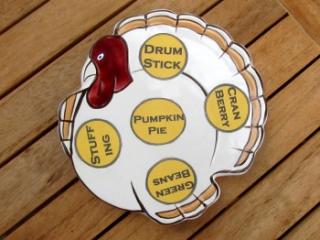Thanksgiving—Not a Religious Buffet

A couple of decades ago, many of our Unitarian Universalist congregations celebrated a Thanksgiving “seder,” a ritual patterned after the Jewish Passover seder. In my congregation, we retold the story of the “First Thanksgiving.” Tables were decorated with white cloth, bittersweet, and pumpkins. Children asked ritual questions, such as “Why do we have turkey and cranberry sauce?” The seder lifted up a litany of voices from the immigrant experiences of many different ethnic groups who had come to the United States. In William Bradford’s words, we recited the story of the Plimouth Colony’s survival through winter and its three-day feast shared with Indians after a successful harvest. We drank cider and ate delicious homemade bread at designated moments between the readings. The ritual spoke to the experience of being American, as in “United States American,” mixing our national origin myth with religious faith.
There was, from the beginning, some controversy surrounding the Thanksgiving seder. Was it respectful of the Jewish tradition from which it borrowed? Or, was it an inappropriate repurposing of another faith’s religious ceremony? Did it matter, if those in the congregation who grew up Jewish loved it?
One year, some of us worked to revise the Thanksgiving seder. Aware of Wampanoag objections to the “Pilgrims and Indians” Thanksgiving myth, we grafted on a section of the ritual in which we said that for the Wampanoag, Thanksgiving is not a single day but a regular practice. That Sunday, just as the ritual ended, someone in the congregation rose to say that our script was offensive in its treatment of Indians: We were re-enacting and celebrating an event that Indigenous People mark with a Day of Mourning. We didn’t know what we didn’t know.
Initially, I felt hurt and angry. We had tried so hard to be inclusive. It took me some time to calm down enough to think about what the congregant had said, and still more time to learn about the damage done. We had sought a kind of cheap grace, a way to skirt the racism of the Thanksgiving myth without giving up our beloved ceremony. Our nod to Wampanoag spirituality, although well-intended, was actually offensive.
Over time, I began the continuing process of filling in the gaps in my knowledge and understanding of the role the Thanksgiving myth has played in cultural genocide of Indigenous people. Also over time, the Thanksgiving seder fell into disuse. As Unitarian Universalists began to recognize and confront instances of cultural misappropriation, many became uncomfortable elevating and sanctifying the Pilgrims’ coming. But the conflict around that Thanksgiving seder and the soul-searching that resulted remain an important part of my faith development as I continue to live into being an antiracist white ally.
Next Steps!
Read the book An Indigenous Peoples’ History of the United States by Roxanne Dunbar-Ortiz. This newly-published Beacon Press book is receiving wonderful reviews. It will help you learn about the big picture of Indigenous history in the US. There is also a UUA discussion guide that you might use with others to help process what you learn.
Add these books, appropriate for children and adults together, to your family or congregational library:
- 1621: A New Look at Thanksgiving (National Geographic Society, 2004)
- Before Columbus: The Americas of 1491 by Charles C. Mann (Athenaeum Books, 2009)
Explore on the UUA website:
- The Doctrine of Discovery; some resources are accessible for youth and older children
- Cultural (mis) appropriation